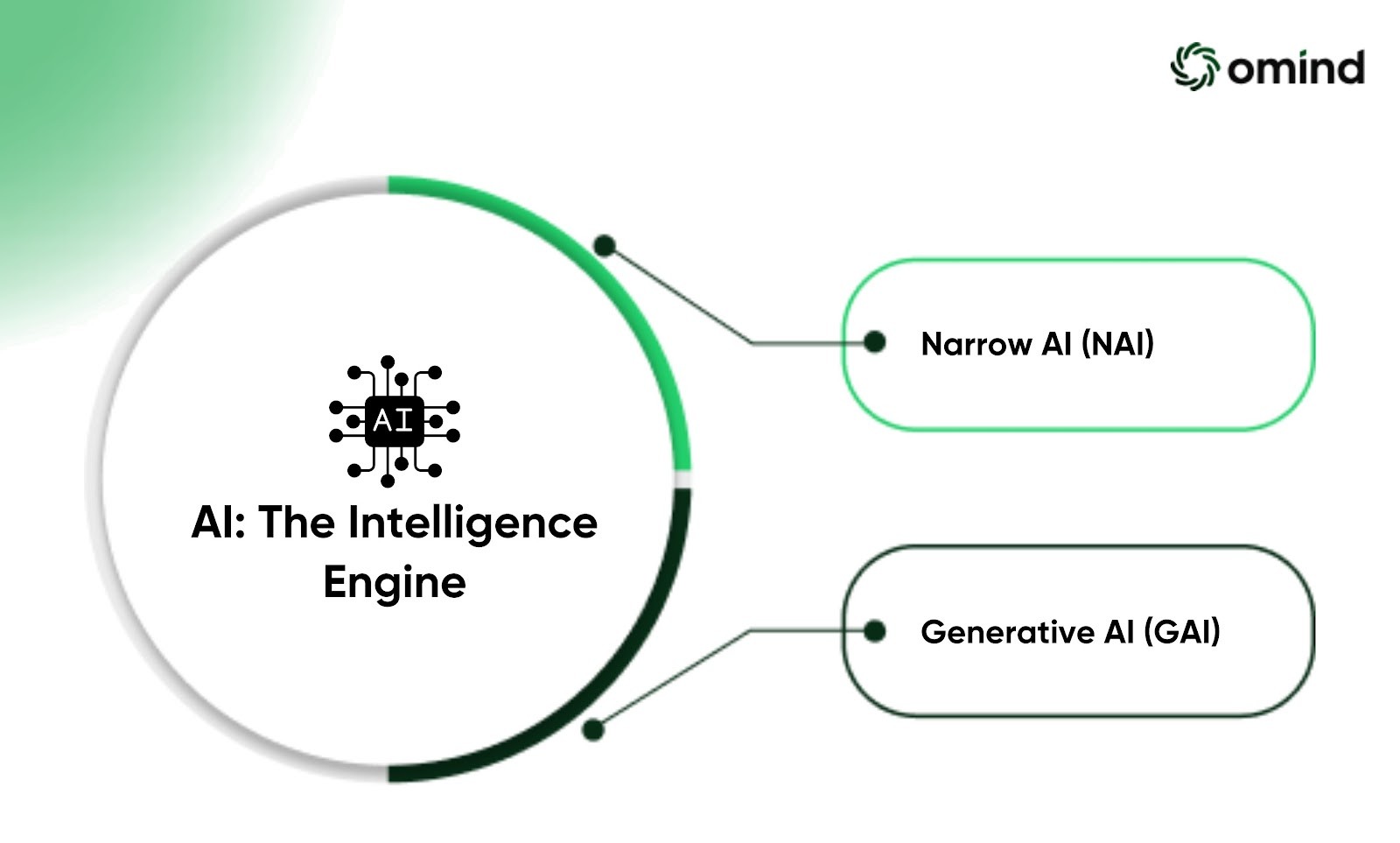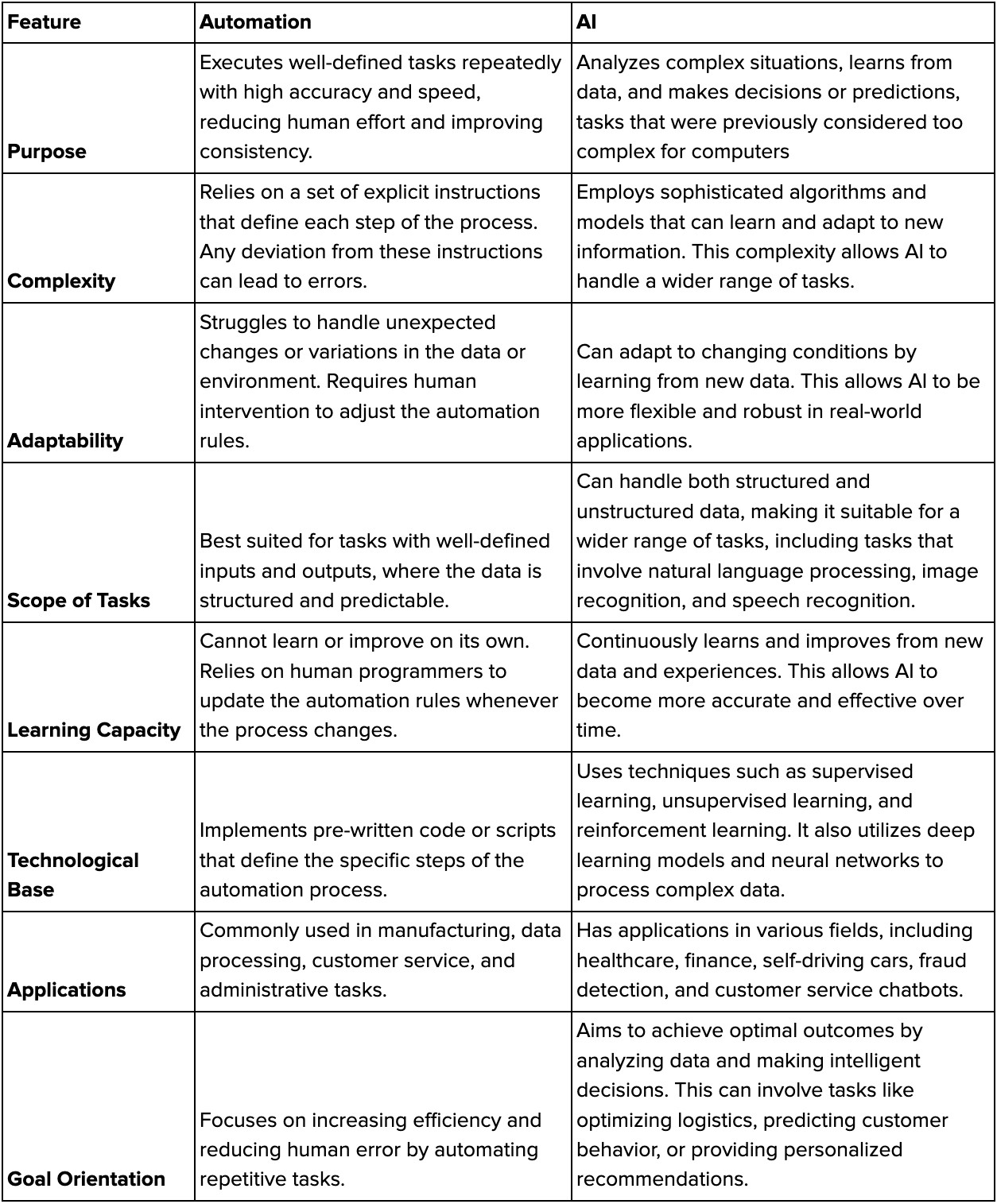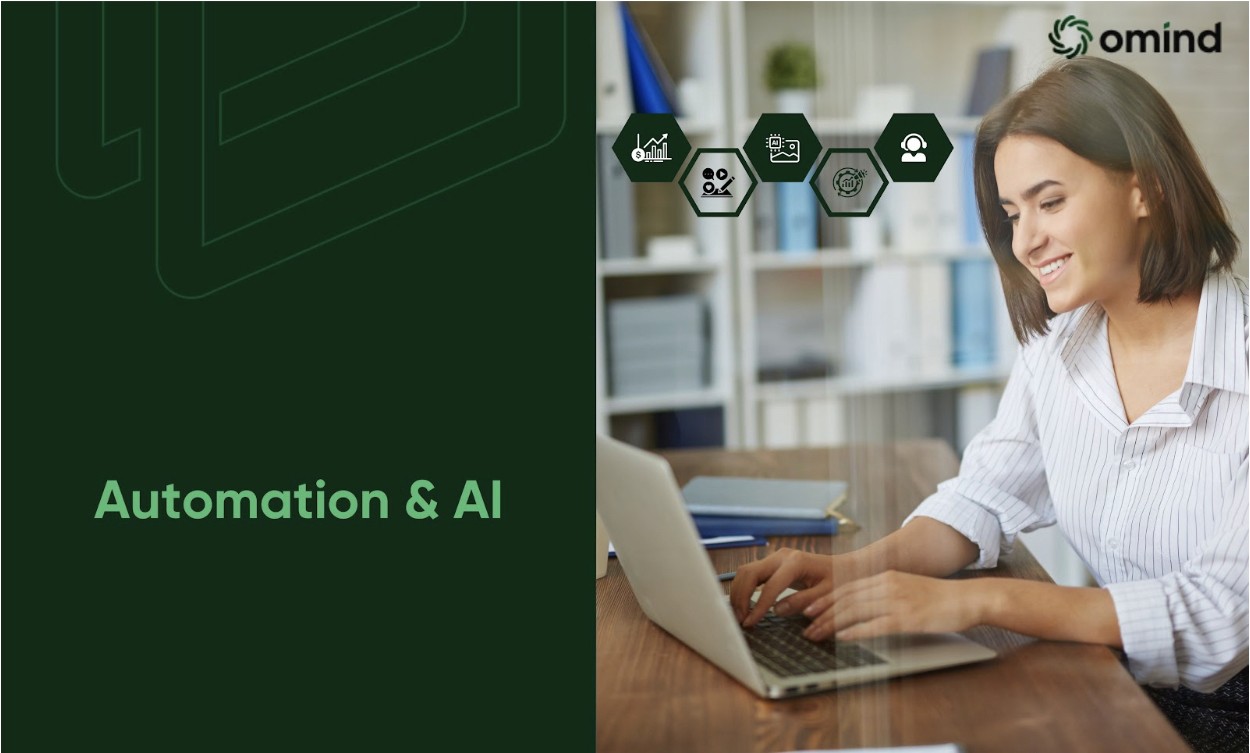Digital automation has transformed industries, propelling productivity to unprecedented heights when it comes to managerial and admin work. But did you know that the potential use-cases of automation can be amplified when paired with the power of AI? Together, they form a potent combination that is saving businesses countless hours. It’s also important to note that while the line between automation and AI has started to blur a little, they are still unique systems.
In this quick read, we’ll take a look into the distinctions between automation and AI, exploring their applications and the strategic benefits of their convergence.
Automation: The Backbone of Efficiency
Automation refers to the use of technology to perform tasks traditionally done by humans. Its core purpose is to streamline processes and reduce errors. Automation excels at handling repetitive, rule-based activities. So how do you implement automation in your operations? Programming frameworks such as Selenium can offer robust automation capabilities, but require technical expertise and a dedicated programmer. Alternatively, no-code tools such as Omind provide a more accessible approach, giving users without coding knowledge the opportunity to build automation workflows.
Automation brings several advantages. Businesses witness increased efficiency, cost reduction, and improved accuracy. Employees are liberated from mundane tasks, allowing them to focus on higher-value work that demands creativity and problem-solving.
AI: The Intelligence Engine

We are well-versed with what AI is in 2024 thanks to the advent of GPT. It involves machines learning from data, recognizing patterns, and making decisions. AI can be divided into two primary categories:
Narrow AI (NAI): Focused on specific tasks, NAI excels in areas like image recognition, speech recognition, and medical diagnosis.
Generative AI (GAI): A hypothetical intelligence matching human capabilities, GAI remains largely theoretical, but is getting there.
While NAI demonstrates impressive abilities, it falls short of human-like understanding and adaptability. GAI learns its patterns from training data, and can generate text, images, and even code, pushing the boundaries of human creativity and problem-solving.
Contrasting Automation and AI
Let’s take a look at the distinctions between automation and AI in this table.

Benefits of Integrating AI with Automation

While automation excels at handling structured, repetitive tasks, its capabilities are amplified when combined with the power of artificial intelligence (AI). AI brings intelligence to automation, enabling systems to learn, adapt, and make decisions based on data. This integration results in significant benefits, including:
Enhanced decision-making: AI-powered automation can analyze vast amounts of data to identify patterns and trends, informing better decision-making.
Improved efficiency: By automating complex tasks that require judgment and learning, organizations can achieve unprecedented levels of productivity.
Increased accuracy: AI algorithms can reduce errors and improve the quality of output compared to manual processes.
New opportunities: The combination of AI and automation can unlock new business opportunities and create innovative products and services.
Combining AI and Automation
To effectively harness the potential of AI and automation, it is crucial to grasp the fundamental concepts of both technologies. This involves understanding the different types of automation, such as robotic process automation (RPA) and industrial automation, as well as the various forms of AI, a few of which we’ve covered above. By developing a solid foundation with both technologies, businesses can make informed decisions about how to implement AI and automation to achieve their goals.
For instance, ML models enhance automation by enabling systems to learn and improve over time. NLP allows machines to understand and respond to human language, expanding automation's capabilities. Optical Character Recognition (OCR) extracts text from images, feeding data into automated workflows. Predictive analytics, driven by AI, forecasts future trends, optimizing automated processes. Speech recognition transforms spoken language into text, enabling voice-controlled automation. There are a myriad of such examples where AI can complement automation.
Embarking on AI-Based Automation
Implementing AI-based automation starts with identifying business needs. Research available technologies to find the best fit. Consider factors like cost, ease of use, and scalability when selecting tools. Develop a clear implementation strategy, including data preparation, model training, and integration with existing systems. By understanding their differences and applications, businesses can harness their combined power to achieve greater efficiency, innovation, and competitive advantage.
For the best in marketing automation that is augmented by AI, Omind’s suite of solutions are designed to make your customer experience and employee experience unparalleled. To get a demo of Omind’s services, contact us.
AUTHOR
Team Omind
Empowering Businesses with Unified Customer Experience Platform, Leveraging Advanced AI and Intelligent Automation
PRODUCT
Unified CXM
Share LINK
Related Blogs



